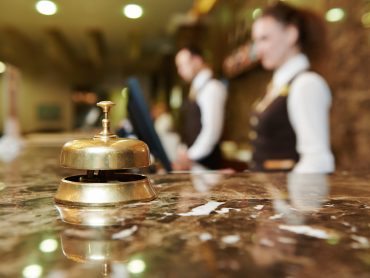Becoming a Gastronomic Destination
Several years ago, I had the opportunity to stay at the Mandarin Oriental Barcelona (MOB) where I remarked upon their exceptional service culture. Lucky enough to recently find myself in the Spanish metropolis, I returned to MOB where my mission was to assess their new approach to food and beverage.
Having experienced their 36-seat, two-star Michelin restaurant, Moments, during my last visit, I was now ready for the signature 15-course tasting menu. Suitably priced well into the upper atmosphere, I waded through each Catalan-inspired dish with bliss, reverence, satiety and anticipation for what would come next. For those who have not yet had the privilege to consume a two-star Michelin meal, know that each course was magical with an extraordinary confluence of elements and senses.
But does a property really need to strive for a two-star Michelin rating for its signature restaurant? Even with the exorbitant prices charged and staffing efficiencies, Moments is probably not a substantial profit silo on its own. What advantages does such a prestigious F&B program bestow upon its parent hotel?
MOB does not stop with their signature restaurant. The main floor restaurant has been transformed into Bistreau by Angel Leon, a gourmet yet slightly casual eatery dedicated to seafood. As well, La Mesa operates three nights a week for a dozen lucky souls ready to embark upon another highly pelagic focused, 15-course tasting menu.
“Our goal is to create a gastronomic destination,” noted Greg Liddell, the property’s Managing Director. “By offering three (four in summer) unique, world-class dining experiences, we differentiate ourselves from the other five-star properties that make our city famous.”
At the luxury end of the spectrum, guests have, well, luxury standards and expectations. When wealthy travelers become accustomed to shelling out hundreds of dollars for each night’s stay, they assume that the guestrooms will be flawless, the lobby awe-inspiring, the fitness center state-of-the-art, the spa sensational and the level of service emotionally uplifting. Luxury by itself does not exclude a hotel from competition.
As Liddell continued, “There is an increased sophistication level of the top tier traveler. No longer is it simply good enough to have a fine dining outlet. For the Mandarin Oriental Barcelona, we set out to challenge ourselves, to take the risks with dishes that have never been offered before.”
As I’ve stressed repeatedly in the past, unique F&B offerings get people talking and can work to heighten overall guest satisfaction. By taking its restaurants many steps further towards creating a ‘gastronomic destination’, MOB is extending its USP well beyond its core of providing luxury accommodations.
So, how do you distinguish your luxury property from the competition? Setting location aside, you have architecture and décor, brand name and loyalty program. All of these play an important part in creating your positioning.
Broader still, is it possible to create another extraordinary characteristic to define a property, regardless of star rating, without excessive capital expenditure? Just as an army marches on its stomach, in the world of superstar properties, the marquee restaurant (or two) presents a critical differentiator. Exceptional F&B is, however, a goal attainable for any hotel class, and this unto itself should prompt you to reconsider program if you haven’t done so recently.
Food can be the soul of your property if you give it the love it deserves – ‘love’ as expressed through proper funding, renovations and team empowerment. Kudos go to MOB for realizing this opportunity.
(Article written by Larry Mogelonsky, published by eHotelier on February 1, 2016.)




